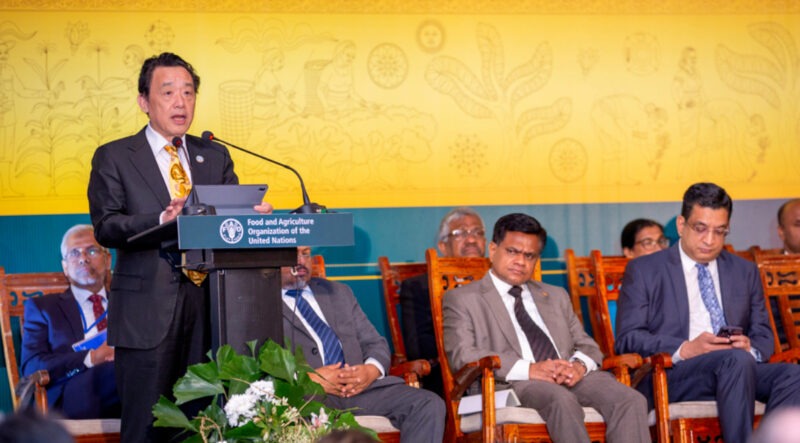The world needs more aquaculture says the UN food agency
Canada’s seafood farmers urge Ottawa to take heed of the UN’s calls for 35% growth in aquaculture by 2030 to fight global hunger
By Fabian Dawson
SeaWestNews
Canada’s seafood farmers are urging Ottawa to take heed of the call by the U.N. Food and Agriculture Organization (FAO) to increase aquaculture production to fight global hunger and undernourishment.
The UN food agency said it hopes to see 35% growth in the sector by 2030 as part of the FAO’s “Blue Transformation” road map, which seeks to change the world’s aquatic food systems by the start of the next decade.
“We need to think innovatively, be action-oriented and results-targeted to make the changes needed to accelerate national and global pathways towards achieving more efficient, more inclusive, more resilient, and more sustainable agrifood systems,” FAO Director-General QU Dongyu said in an opening statement at the 37th Ministerial Session of the FAO Regional Conference for Asia and the Pacific in Colombo, Sri Lanka.
In its country profile on Canada, FAO states there is potential for significant increases in Canadian aquaculture production to hike domestic supplies and create export opportunities.
While the opportunity to sustainably produce more salmon in Canada is unparalleled in the world the Liberal government has been unduly influenced by aquaculture detractors and activists rather than relying on science and traditional indigenous knowledge to grow the industry, states the Canadian Aquaculture Industry Alliance (CAIA).
“The oceans have vast opportunity for sustainable aquaculture production. In Canada, we are only using approximately 1% of our viable area for aquaculture production,” Tim Kennedy, President and CEO of CAIA told SeaWestNews.
“This is a growing recognition that only so much more food can come from the land in a growing world. They also recognize that there are pressures on the ocean and that wild capture production cannot keep up with the pace of demand to feed a hungry world.
“In a world that needs high quality and healthy protein, increasing sustainable aquaculture production is the answer,” he said.
“Canada should be a leader – but we need governments to understand that we are a solution and that we can grow jobs in coastal communities, produce high-quality and low-carbon footprint seafood for the world, and achieve Indigenous reconciliation.
And we need them, like the FAO, to stand up and say: “We can and must do this. Aquaculture is the future.”
The Coalition of First Nations for Finfish Stewardship (FNFFS), based out of British Columbia has also called on Ottawa to respect their jurisdictions and not take actions that would remove salmon farms from their territories.
“Over the last 100 years we’ve seen the decline of wild salmon. And so, over the past 10 years we’ve embraced salmon farming in our territories for food security, for employment opportunities, and for socio-economic human well-being,” said Coalition spokesperson Dallas Smith.
“It’s important for all Canadians to know that of all the existing salmon farms remaining in British Columbia, 100% are supported by the First Nations communities that they operate in,” he said.
In British Columbia, government decisions at the behest of activists, have already shut down 40% of salmon farms since 2020, increasing carbon emissions and wiping out jobs that are the lifeblood of rural, coastal and Indigenous communities.
Before the shutdowns the salmon farming sector was the largest agri-food export in British Columbia. The sector employed approximately 6,500 people, produced close to 500 million salmon meals per year, received inputs from over 1,000 individual suppliers and had an economic value of $2 Billion.
The Federal Government is now working with the industry, First Nations, coastal communities and other stakeholders to come up with a Transition Plan for salmon farming in British Columbia. The Transition Plan, expected later this year, will impact more than 4,700 jobs and $1.2 billion in economic activity annually in British Columbia.
Canada’s aquaculture industry generates $3.86 billion in economic activity; employs over 14,500 Canadians and provides 1/3 of the total value of Canada’s fisheries production.
It is the fourth-largest producer of farmed salmon in the world with 97 per cent of salmon produced in Canada being farm-raised, which is key to reducing pressure on limited wild stocks.
But the production levels have stagnated despite a wealth of science and innovation in the industry that shows both wild and farmed can thrive in Canadian waters.
Image shows FAO Director-General QU Dongyu addressing delegates at the Regional Conference for Asia and the Pacific in Sri Lanka ©FAO/Sujeewa de Silva

